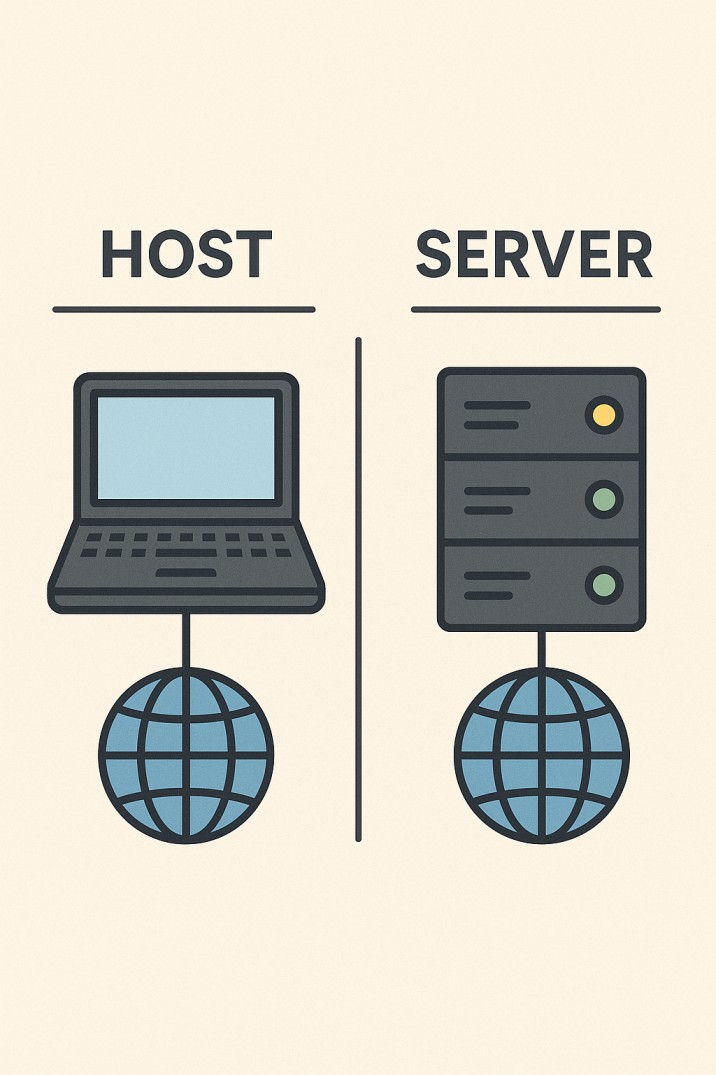What are Web Servers?
It is a server that includes computer systems that host and deliver website content on the website with the help of the internet and web browsers. All web servers include two main components: Hardware and Software.
Hardware: The web server hardware consists of a physical computer – CPU, RAM, and SSDs or hard drives that keep web server software and website files (HTML, CSS, Javascript, images, fonts, etc). It also includes connecting to the internet and exchanging the data with other physical devices connected to the web.
Software: A web server’s software includes various elements dictating how users can access host files. The core elements consist of HTTP server – software that starts and replies to browser requests.
How do Web Servers Work?
A web server is a computer that stores and delivers web pages to users. It acts as a bridge between the internet and the content on a website.
- User Request:
- A user types a website’s URL into their web browser.
- The browser translates the URL into an IP address using the Domain Name System (DNS).
- Connection Establishment:
- The browser sends a request to the web server at the specified IP address.
- The web server receives the request.
- File Retrieval:
- The web server locates the requested file (HTML, CSS, images, etc.) on its storage.
- It checks the file’s status and content type.
- Data Transmission:
- The web server sends the file’s content back to the browser.
- The content is typically transmitted using the Hypertext Transfer Protocol (HTTP).
- Rendering:
- The browser receives the content and interprets it.
- It displays the webpage, including text, images, and other elements.
Key Components:
- Web Server Software: This software handles incoming requests, retrieves files, and sends responses. There are various options available like Apache, Nginx, and Microsoft IIS.
- Hardware: The physical computer or server that runs the web server software.
- Storage: A hard or solid-state drive storing website files.
- Network Connection: A connection to the internet, allowing the server to communicate with other computers.
Additional Considerations:
- Dynamic Content: Many websites generate content dynamically, such as database-driven pages or server-side scripting. The web server interacts with other applications or databases to create these pages.
- Security: Web servers must be protected from security threats like hacking and malware. This includes firewalls, encryption, and regular updates.
- Performance: A well-configured web server can handle a large number of requests efficiently. Factors like hardware, software optimization, and caching can impact performance.
In essence, a web server acts as a gatekeeper, receiving requests from users and delivering the requested content in a format that the browser can understand and display.
Reasons to use web servers
Web servers are essential components of the internet, serving as the foundation for countless websites and online applications. Below mentioned are key reasons why businesses and individuals use web servers:
1. Hosting Websites:
- Accessibility: Web servers make your website accessible to users worldwide through the internet.
- Content Delivery: They store and deliver your website’s content (HTML, CSS, JavaScript, images, etc.) to visitors’ browsers.
2. Providing Online Services:
- Applications: Web servers can host various online applications, such as email, content management systems, e-commerce platforms, and more.
- APIs: They can expose APIs (Application Programming Interfaces) that allow other applications to interact with your services.
3. Data Storage and Management:
- Databases: Web servers can store and manage databases that contain important data for your website or application.
- File Storage: They can also store files like documents, images, and videos.
4. Security and Protection:
- Firewall: Web servers often act as a firewall, protecting your network and data from unauthorized access.
- SSL/TLS: They can use SSL/TLS encryption to secure data transmission between your server and visitors’ browsers.
5. Scalability and Performance:
- Resource Allocation: Web servers can be configured to handle varying levels of traffic, ensuring optimal performance.
- Load Balancing: Multiple web servers can work together to distribute load and improve response times.
6. Analytics and Monitoring:
- Data Collection: Web servers can collect data on website traffic, user behavior, and performance metrics.
- Insights: This data can be used to make informed decisions about website optimization and marketing strategies.
In essence, web servers are the backbone of the modern internet, enabling the creation and delivery of a wide range of online services and experiences.
Web Server Configuration
Web server configuration is a process of customizing a web server’s settings to meet specific requirements. This involves adjusting various parameters related to security, performance, resource allocation, and more. The exact configuration steps can vary depending on the web server software (e.g., Apache, Nginx, IIS) and the operating system.
Key Configuration Aspects:
- Listening Port:
- The port number (usually 80 for HTTP and 443 for HTTPS) on which the web server listens for incoming connections.
- Document Root:
- The directory where the web server stores the files that it serves to clients.
- Error Pages:
- Custom error pages that can be displayed to users when they encounter errors (e.g., 404 Not Found).
- Virtual Hosts:
- Multiple websites can be hosted on a single server using virtual hosts, each with its own configuration.
- Security Settings:
- Configuring firewall rules, SSL/TLS certificates, and security headers to protect the server from attacks.
- Performance Optimization:
- Tuning settings like caching, compression, and connection limits to improve performance.
- Logging:
- Enabling and configuring logging to track access attempts, errors, and other events.
Common Web Server Software and Configuration
Apache:
- Configuration files are typically stored in /etc/apache2/apache2.conf and /etc/apache2/sites-enabled/.
- Uses a modular architecture, allowing for customization through modules.
Nginx:
- Configuration files are stored in /etc/nginx/nginx.conf and /etc/nginx/sites-enabled/.
- Known for its high performance and scalability.
IIS (Internet Information Services):
- Configuration is typically done through the IIS Manager interface or by editing configuration files.
- Used primarily on Windows systems.
